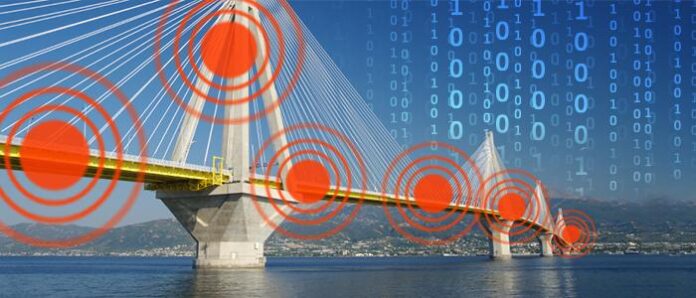The great thing about the “Internet of Things” is that, by definition, it is a very big space and covers everything from a connected washing machine to industrial machine-to-machine applications and solutions. The industry obviously loves this approach since many companies, no matter what they do, can claim to be part of IoT, jump on the bandwagon and claim some very big numbers for the devices that will be connected. Everyone wins.
But the reality, to me anyhow, is that many of the reasons to connect a device make little sense from a return-on-investment perspective. Compare the two acronyms and you will see that IoT is missing the “R” from ROI. So where is the return for many of the applications and services being discussed?
Let’s take a couple of examples. A friend of mine and I were recently having this discussion — where does IoT make sense? He cited the example of his new home furnace and its connected thermostat; he can now control his thermostat from his smartphone. The connected thermostat was an extra $100 — money well spent he thinks. But he admitted it had been about 15 years since he last bought a heater. So at that rate, it will take a while for the majority of homes to get connected thermostats. Remember that the ROI on a connected thermostat is one of the strongest for the home — way better than a connected washing machine, fridge or crock-pot, for example. Yes, you can buy a Wi-Fi-enabled crock-pot so you can “control your Crock-Pot® from where ever you are.” Really.
Ah, but I hear you cry, you can pop down to Lowes or Home Depot and buy a new thermostat right now. Nest is the obvious example. Now we get into the cost; a Nest Thermostat is $250. My house has four thermostats (all are programmable by day and we have them set up pretty well for our schedules) and so I would have to spend $1,000 to replace our existing thermostats. The return would likely be pretty small in terms of energy savings, although we would have the convenience of adjusting the temperature remotely when we are traveling. Maybe the cat would appreciate that.
Granted, many homes do not have programmable thermostats so the upgrade from a conventional “single temp” solution would be worthwhile. But a programmable thermostat can be had for less than $30 (most are around $50 to $70). The cheapest Wi-Fi-enabled thermostat (on the Lowes website) is $119 and most are about $150. So is the ability to remotely connect to your thermostat worth an investment of $150?
The Honeywell website has a simple calculator to see the savings you will get from a Wi-Fi programmable thermostat. It asks you for your location, cost of energy and the temperatures you typically keep the house at in summer and winter. For my house, the annual savings of having a Wi-Fi programmable thermostat are shown as $104 per year. Assuming I would have to replace four thermostats at a cost of $600, it would take six years to get my investment back and start saving money. Hardly compelling.
But if a home had a really old thermostat that needed replacing anyway, a one-year payback would probably make sense. I will admit the challenge for me is the total investment needed because we have four thermostats that are already programmable. Do the savings really come from Wi-Fi connectivity or from the fact the thermostat is programmable? I suspect the latter. Of course, depending on size, most homes have either one or two; apartments typically have one. So the cost of upgrading is lower.
Now let’s compare this consumer application of IoT to a commercial one: adding connected sensors to a pipeline for a gas/oil storage facility. Granted, most pipelines have some type of remote monitoring on them now and so this is hardly a greenfield opportunity. But, by reducing the need for sending someone out to the site for an inspection, costs are also reduced; real money is involved in sending a truck out. Inspections will still be required but the frequency may be reduced. And the ability to remotely diagnose a problem will reduce the need to dispatch someone to the site.
The same argument can be applied to numerous types of industrial equipment and infrastructure: cell towers (remote adjustment of antennas, for example), utilities, water progressing facilities, trucking and transportation, etc. In each case, the returns are easy to see and calculate — hence why many companies offer solutions in these areas.
So while IoT sounds great in having everything connected, the reality is that it really does not make sense to connect some of these devices. My toaster, fridge, washing machine, dryer, coffee maker, etc., are a real stretch of the ROI imagination. The security system, sprinkler and septic alarm make more sense. And any industrial application probably works as well. Just remember, in some cases, you have to put the “R” in. It may not be there naturally.
Iain Gillott, the founder and president of iGR, is an acknowledged wireless and mobile industry authority and an accomplished presenter. Gillott has been involved in the wireless industry, as both a vendor and analyst, for more than 20 years. IGR was founded in 2000 as iGillottResearch in order to provide in-depth market analysis and data focused exclusively on the wireless and mobile industry. Before founding iGR, Gillott was a Group VP in IDC’s telecommunications practice, managing IDC’s worldwide research on wireless and mobile communications and Internet access, telecom brands, residential and small business telecommunications and telecom billing services. Prior to joining IDC, Gillott was in various technical roles and a proposal manager at EDS (now Hewlett-Packard), responsible for preparing new business proposals to wireless and mobile operators.
Editor’s Note: Welcome to our weekly feature, Analyst Angle. We’ve collected a group of the industry’s leading analysts to give their outlook on the hot topics in the wireless industry.


